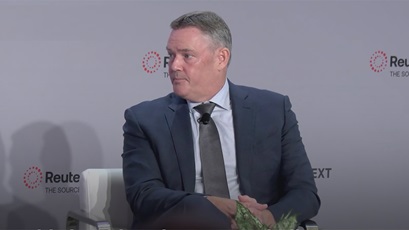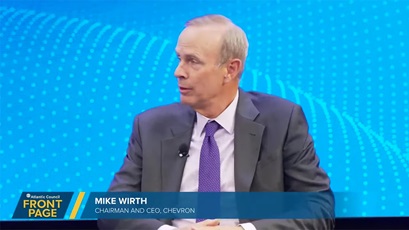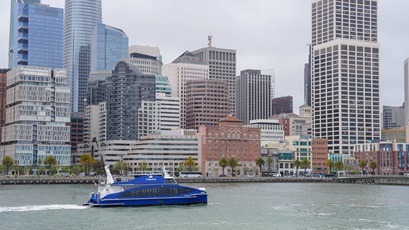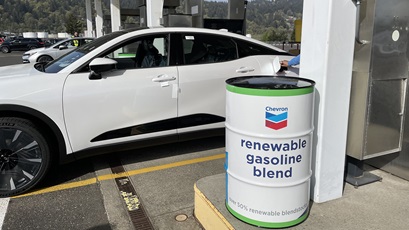emissions solutions
exec speaks on reducing carbon intensity in trucking industry
2 min read | october 20, 2022
Carbon emissions in the commercial trucking, shipping, aviation and rail industries are more challenging to curb than other sectors. In climate-speak, they are known as the “hard-to-abate” industries because their size and scope are just that—hard to reduce. This week, industry leaders will converge at the American Trucking Associations (ATA) 2022 Management Conference & Exhibition in San Diego, California.
On the eve of the seminal event for leaders of the trucking industry, Kevin Lucke, president of Chevron Renewable Energy Group, shared his thoughts on Chevron’s acquisition of Renewable Energy Group, the expansion of our renewable fuels business and how we are working to lower carbon intensity in the heavy-duty transportation sector.
lowering carbon intensity
When it comes to the future of the trucking industry, change is in motion.
“One change I believe many businesses in the heavy-duty transportation sector may have seen over the last five years is a shift toward more sustainable operations,” Lucke said. “I think one challenge businesses are facing in that space is trying to understand how they can reach lower carbon operations, while not heavily impacting their bottom line.”
This is where Chevron can help fleets decarbonize: we produce both biodiesel and renewable diesel, known as drop-in fuels. These lower carbon alternatives can be used immediately without major infrastructure investments.
“We continue to work with more and more businesses to help them reach their lower carbon targets through the use of renewable fuels,” Lucke said.
developing renewables
In 2021, Chevron announced our intention to grow our renewable fuels production capacity to 100,000 barrels per day by 2030. With the acquisition of Renewable Energy Group, we are approximately a third of the way toward that goal.
Coupled with two other major capital projects, we are even closer.
“An improvement and expansion project will increase our production capacity in Geismar, Louisiana, from around 90 million gallons of renewable diesel per year to roughly 340 million gallons per year,” Lucke said. “Once this project is completed, it propels Chevron almost halfway toward our goal.”
We are also adding a state-of-the-art pretreatment facility at our plant in Emden, Germany, to lower the carbon intensity of fuels produced at the facility.
custom made
How our renewable fuels are optimized varies widely from customer to customer and facility to facility.
“In some instances, our fuel is delivered to a terminal location for later use or blended and delivered to be dispensed at a retail location,” Lucke said. “In other instances, our fuel is delivered directly to a customer’s tank to be utilized by the business, oftentimes as a renewable fuel blend.”
The finished fuel is usually transported via truck during some portion of the journey.
kevin lucke
president of Chevron Renewable Energy Group
taking stock
“In the future, we see this business unit expanding to focus on more than biodiesel and renewable diesel production,” Lucke said.
Chevron and Bunge worked together to create a joint venture at Bunge’s soybean processing plants in Destrehan, Louisiana, and Cairo, Illinois.
Both Chevron and Renewable Energy Group have also invested in CoverCress, a cover crop that can be crushed, with the resulting oil used to produce biofuel.
“We believe these types of feedstock projects are going to allow for additional investment and innovation in the future.”
topics covered
related content
-

 novel ideas, established companies key to advancing lower carbon tech
novel ideas, established companies key to advancing lower carbon techemissions solutionsjanuary 14, 2025
-

 chevron CEO talks growing production, efficient spending
chevron CEO talks growing production, efficient spendingemissions solutionsdecember 18, 2024
-

 1st US hydrogen-powered passenger ferry open for business
1st US hydrogen-powered passenger ferry open for businessalternative fuelsaugust 23, 2024
-

 toyota and chevron drive progress with renewable gasoline blend
toyota and chevron drive progress with renewable gasoline blendalternative fuelsjuly 18, 2024
chevron email updates
Subscribe to our newsletter to receive news and updates.



